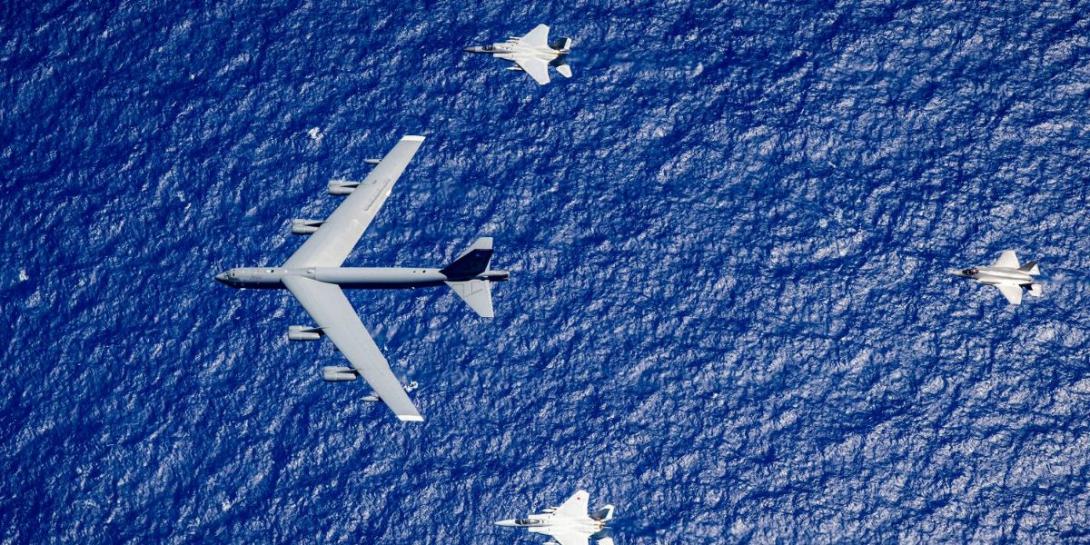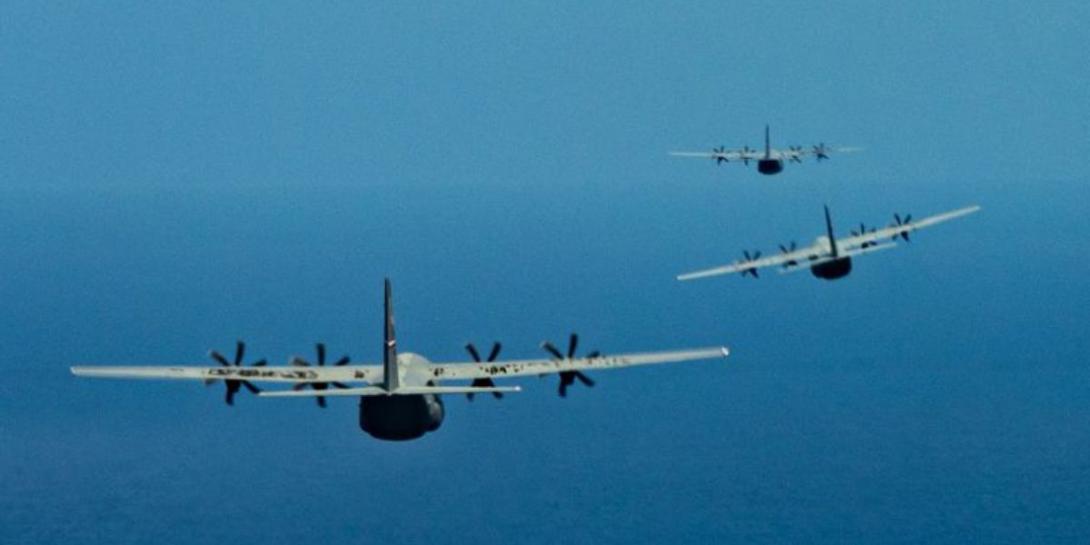Indo-Pacific Interoperability Improves Each Day
The resurgence of COVID-19 during the multinational military exercise known as Cope North offered an opportunity for innovation and proved U.S. allies and partner nations in the region continue to make strides on interoperability, according to Col. Jared Paslay, USAF, who leads the Pacific Air Force Agile Combat Employment Joint Integration Team.
Air forces from Australia, Japan and the United States participated in Cope North February 2-18. The humanitarian assistance and disaster relief exercise is a large force deployment and aerial combat training exercise. The recurring event reinforces participating countries’ ability to support the Indo-Pacific region during natural disasters. Operations took place at Andersen Air Force Base and Northwest Field on Guam; the Commonwealth of the Northern Mariana Islands, including Rota, Saipan, and Tinian; Palau; and the Federated States of Micronesia.
Fighter aircraft from the U.S. Air Force, Japan Air Self-Defense Force and Royal Australian Air Force conducted aerial refueling, close air support and counter-air missions. Participants also exercised agile combat employment, or ACE, concepts, the Pacific Air Forces’ model to project combat power via a network of distributed operating locations throughout the Indo-Pacific.
With the COVID-19 variant known as omicron spreading throughout the region, the participating nations could have called off the live exercise but chose not to, Col. Paslay says. “With the omicron surge, we and all of our partner nations could just as easily have mailed this one in and just had a Skype and called it good, but to everyone’s credit, they showed up,” he noted.
COVID-19 presented some challenges, though, with each country, commonwealth and territory implementing different restrictions. “It seemed like a lot of these COVID restrictions, with good reasons, seemed to change daily,” the colonel says.
But as the cliché goes, with challenges come opportunities. In this case, Air Force officials found an opportunity in innovative use of a relatively common Air Force software known as C2IMERA, or Command and Control Incident Management Response Application. The system provides situational awareness and a common operational picture on Air Force installations for planning, force employment, emergency management, command and control monitoring and reporting.
“That software program aggregates an almost limitless number of databases into a coherent solution that can then present decision-quality information to a commander,” Col. Paslay explains. “This thing can track sortie rates, maintenance status, munitions rates, all sorts of things that an installation commander would like to know of.”
Turns out, it’s also pretty good at tracking COVID-19 cases. “We actually had trilateral members, these exercise participants, headquartering out of hotels, so instead of seeing Kadena Air Force Base, I could see the Tsubaki Hotel and how many people were in there, if we had any people that were remaining in place under restricted movement, if people were flowing in or out of the hotel, if they moved to a different location,” he says. “As we continually try to walk a fine line between that prudent risk acceptance and limiting transmission of COVID, we also have very real jobs to do. That was a real quick win that could pay off in other theaters as well with existing tech that we already have and use every day in the real world.”
The Air Force was able to share that COVID-19-related information with the other nations, and they each shared their own pandemic data. “The COVID problem set was a trilateral problem set that we were tackling together. It was really good to team up through trilateral reporting and use, to the maximum extent possible, shared resources to address any requirements as a team as quickly and as effectively as possible,” Col. Paslay says.
As always, however, there still are some “tricky” parts to trilateral reporting. “Sometimes as we bring new capabilities online, we just don’t have the bandwidth and/or the rights to share as quickly as I wish we could,” the colonel offers.
Additionally, different nations require varied classification levels, so much of the partnering in the region is done bilaterally, Col. Paslay points out. “As soon as you loop additional partners into the fray, it’s not that we can’t talk to each other; it’s just hard to talk all together in the same forum. We bilateral a lot of these things out here, and it’s stuff that we’re trying to overcome, but that’s just reality today.”
At times, officials start with simple solutions, such as spreadsheets. “It starts with a need: we have to track COVID. And then you come up with a very rudimentary [solution]. We have to hand jam it on some type of Excel sheet, or we have to have a sign-in log at location X,” he reports. Then, as we loop on more elegant solutions, you get the ability to more rapidly and effectively disseminate that information.”
Sorting out what information can be shared with each country gets “a little bit fuzzier” because of requirements to comply with the Health Insurance Portability and Accountability Act. Initially, COVID-19-related information also was being “hand jammed” until it became clear that C2IMERA was a good solution.
Col. Paslay envisions a database of information that can be shared with multiple countries. “Honestly, C2IMERA is a good example. That type of capability is only as good as the databases that feed it. We currently don’t really have a trilateral shareable database,” he says.
“It would shorten the time for awareness on, for instance, COVID,” or other crises, he adds. “You could more accurately and quickly make a timely decision to mitigate a crisis before it becomes one.”
In this case, C2IMERA allowed the Air Force to “be good stewards of the concerns of a lot of the areas around us that were hosting forces,” but the challenge would have been even greater if COVID-19 were to spread on islands with little healthcare infrastructure. Some, for example, do not have hospitals.
“It would be a very big deal for them if they had a COVID outbreak as opposed to an outbreak in a fully fleshed-out, first-world health care infrastructure like Saipan or Guam. Because of that, it was of utmost importance for us to communicate among ourselves so we could also communicate with those host governments to mitigate any concerns they had,” Col. Paslay elaborates.
Overall, the colonel gives the United States and its partners and allies high marks for information sharing and interoperability. “Honestly, I give us a solid B,” he offers.
He gives the high grade in part because “we know so much more about what we don’t know,” he says, expressing confidence that when real-world events occur, such as the pandemic and the tsunami that recently rocked Tonga, the international partners can communicate and coordinate a response. “If in a worst-case scenario, this was a crisis, we could do this. We could actually get out there and do this,” he asserts. “We’re actually starting to identify those tough points before we even get there into execution and get after them and mitigate them. And we’re only getting better from here.”
Continually striving to get better is important because building relationships in the region is a critical part of the U.S. mission. “One of the key focus points in the Indo-Pacific is on growing our allies and partnerships. There’s a lot of good reasons for that. One of them is that, honestly, we can’t do what we do without their help,” Col. Paslay states. “I can’t do crisis response effectively without them because they’re usually on the front lines. They’re there before we are, and sometimes their capabilities meet or exceed what we have in theater at any given time.”






Comments